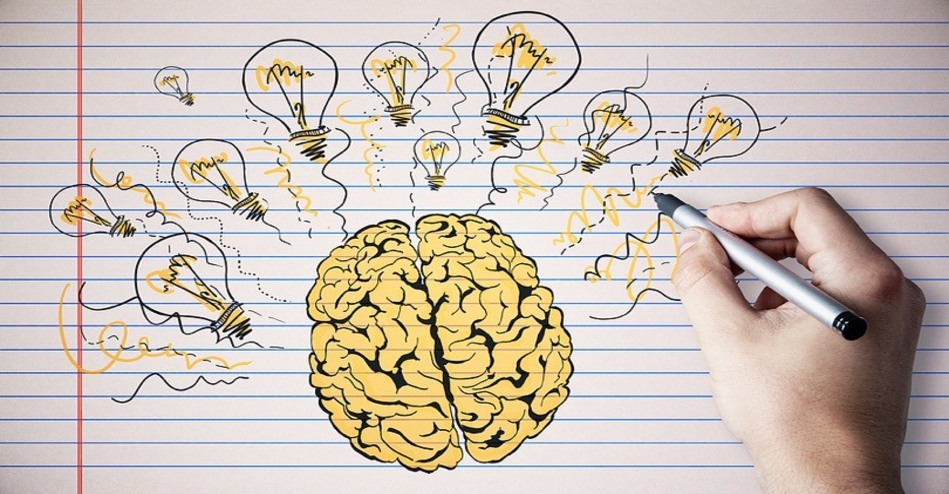Where does creativity come from, and where are the finest, most useful connections made? In the spaces in-between, observes Faris Yakob.
Traditionally, it is a boon of the advertising industry that the agency is closed between Christmas and New Year. It’s a weird liminal time, literally on the threshold between two different years and modes of being. The recovery hammock between the festivities of the silly season that absorb December and the expected vigor of January. T’aint this nor that, it’s an in-between, betwixt the gone and the unknown. Liminal spaces are where identities and certainties blur and new things become possible.
The in-between is the scene, the place to be seen, the source of scenius, that collective form of genius named by Brian Eno. It’s the intersection, the ecotone, the transition between two different ecological communities where there is significantly more biological diversity than in either alone.
It’s where novel ideas grow, spliced together from different cultures. According to Ronald S. Burt, a sociologist at the University of Chicago, “People who live in the intersection of social worlds are at higher risk of having good ideas.” Good ideas are chimeras, the more interesting ones held together with dynamic tension spanning different domains, and they can be risky.
We don’t like too much risk, especially when the world seems uncertain and scary. Indeed, creativity itself seems scary to many people, because it is about change and we have an implicit belief that the status quo is safe, even when it’s been pretty unsafe of late. “People actually have strong associations between the concept of creativity and other negative associations like vomit and poison,” according to Jack Goncalo, a business professor at the University of Illinois. We are all seemingly trapped in between what we think and how we feel and therein brands lie, reassuring the mind while stimulating the emotions that together lead us toward purchases.
Creativity is combinatorial and, as we discussed last month, new kinds of software can absorb all the available inspiration on the internet and then generate new combinations from that body of work. Beyond art and copy, my friend and former colleague Noah Brier recently debuted a tool which creates brand collaboration mash-ups using OpenAI tools. By tapping a few inputs into BrXnd.AI you can see what products might happen in between any two brands, for better or cursed. The Cap’n Crunch x Brunello Cucinelli jacket looks awesome but the Clorox x Mountain Dew ice cream does not.
Noah was an agency strategist before founding various tech companies and he immediately gleaned the hint of insight from his experiment. “It wasn’t just that this thing could spit out amazing-looking imagery, it was that it seemed to understand which brands were strong and which were weak. Somewhere, deep in the system, were truths about what brands stand for and how they function that have been difficult to articulate, never mind quantify, before now.”
Some brands consistently overwhelm others in the collaborative rendering, they have more salience and definition, according to the machine. The biggest brands tend to be the most salient but there are also niche fashion brands like The Hundreds which seem to achieve salience without scale. There is some understanding of brands being built in the aggregation of all images, in the in between. Noah is beginning to explore using the system to analyze brand strength and recognition and announced a conference in New York to explore the topic broadly. As he points out, branding and AI are both ultimately about pattern matching.
In the recent movie Glass Onion, itself an homage and mash-up of innumerable movie plots, references and images, the detective unwinds various different real and staged plots and schemes as the movie plays them back to you, showing the different sides of each story. This Rashomon effect reminds us that truth is created at the intersection of different stories. As in the classic Points of View commercial for The Guardian newspaper from 1986, the same story told from different angles becomes a different story.
In those different interpretations is the in-between, the space where we all confuse each other with our different readings of the same ‘objective’ reality, which is also where new combinations can bloom. Misunderstandings can lead to clarity. Life, ultimately, is one (hopefully) long liminal experience, going through change as you move from one state to another. By the time you have acclimatized, things have changed again. This new year will no doubt contain surprises but hopefully, if we have managed to get some rest, we can use them to create new insights, ideas and enthusiasms that will propel us through to the next one.
ENDS
—
This article first appeared https://www.warc.com/
Seeking to build and grow your brand using the force of consumer insight, strategic foresight, creative disruption and technology prowess? Talk to us at +971 50 6254340 or engage@groupisd.com or visit www.groupisd.com/story

